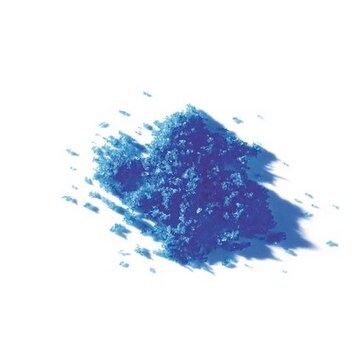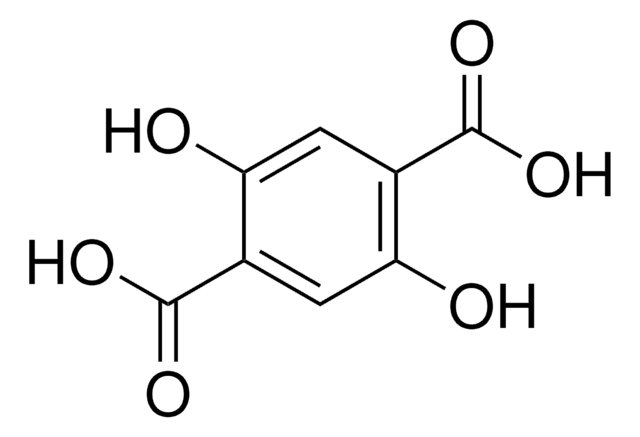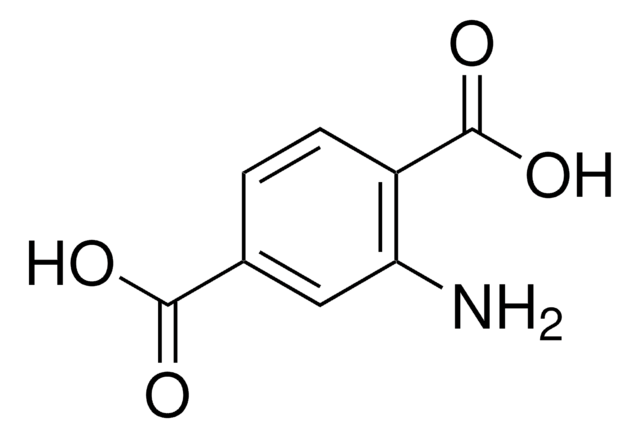推薦產品
品質等級
化驗
(iodometric, redox titration)
≥99.9% trace metals basis
形狀
(Crystal or Powder)
溶解度
water: soluble
負離子痕跡
chloride (Cl-): ≤20 ppm
sulfate (SO42-): ≤50 ppm
正離子痕跡
Al: ≤10 ppm
Ca: ≤10 ppm
Cd: ≤10 ppm
Cr: ≤10 ppm
Fe: ≤10 ppm
K: ≤10 ppm
Mg: ≤10 ppm
Mn: ≤10 ppm
Na: ≤30 ppm
Ni: ≤10 ppm
Pb: ≤10 ppm
Si: ≤10 ppm
Zn: ≤10 ppm
一般說明
Copper(II) nitrate trihydrate is a crystalline compound with high solubility in water. It serves as an excellent precursor for the synthesis of high-purity compounds, nanomaterials, and catalysts.
應用
Metal-organic frameworks (MOFs) have found applications in various fields such as gas storage, separations, sensors, catalysis, fuel cells, solar cells, nanotechnology devices, and drug delivery. Through a modular assembly strategy, a highly crystalline thin film of Cu-TCPP MOF was synthesized using Copper(II) nitrate trihydrate and the linker TCPP. This specific MOF holds significant promise due to its well-defined structure and potential for diverse applications. -Copper oxide nanoparticles of varying sizes were synthesized through a hydrothermal method using different concentrations of Copper(II) nitrate trihydrate. The pH of the solution was adjusted by adding NaOH or HNO3. This versatile approach allowed for the controlled synthesis of copper oxide nanoparticles with different sizes. - Mesoporous CuCo2O4 nanowires were synthesized as electrode materials for supercapacitors using Copper(II) nitrate trihydrate and Cobalt(II) nitrate hexahydrate using hydrothermal method. The synthesis involved nanocasting from a silica SBA-15 template. These electrode materials exhibited a capacitance of 1210 F g–1 at a current density of 2 A g–1, which significantly increased upon cycling to exceed 3000 F g–1. - A hybrid electrode comprising CuO and Cu2O micronanoparticles within a graphitized porous carbon matrix was synthesized using Copper(II) nitrate trihydrate via a one-step thermal transformation process. This hybrid electrode exhibited remarkable performance when employed as a negative electrode in lithium-ion and sodium-ion batteries, achieving capacities of 887.3 mAh g–1 at 60 mA g–1 and 302.9 mAh g–1 at 50 mA g–1 after 200 cycles, respectively. In addition,Copper(II) nitrate trihydrate serves as a suitable precursor for synthesizing copper catalysts for various applications. -Copper ferrite catalysts were synthesized using a co-precipitation method with the salt precursors Copper(II) nitrate trihydrate and Fe(NO3)3·9H2O. These catalysts exhibited heightened activity in the water-gas shift reaction. The improved catalytic performance can be attributed to factors such as enhanced Cu dispersion, a higher quantity of surface copper atoms, the presence of weak basic sites, and a strong interaction between copper and iron oxides, all resulting from the formation of copper ferrite.
訊號詞
Danger
危險聲明
危險分類
Aquatic Acute 1 - Aquatic Chronic 2 - Eye Dam. 1 - Ox. Sol. 2 - Skin Corr. 1B
儲存類別代碼
5.1B - Oxidizing hazardous materials
水污染物質分類(WGK)
WGK 3
閃點(°F)
Not applicable
閃點(°C)
Not applicable
我們的科學家團隊在所有研究領域都有豐富的經驗,包括生命科學、材料科學、化學合成、色譜、分析等.
聯絡技術服務











